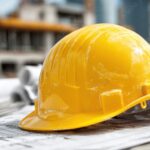
“The U.S. is Earth’s punching bag for nasty weather,” said a contributor to PBS News Hour. “Blame geography for the U.S. getting hit by stronger, costlier, more varied, and more frequent extreme weather. Two oceans, the Gulf of Mexico, the Rocky Mountains, jutting peninsulas like Florida, clashing storm fronts, and the jet stream combine to naturally brew the nastiest of weather.” Our country’s location on the world map, combined with the effects of climate change, means we are experiencing extreme weather events at a rate and intensity like never before.
These natural events add a layer of complexity to roofing projects. After all, a critical part of the building envelope, a roof must withstand whatever Mother Nature throws at it. Metal roofing systems, which are becoming synonymous with sought-after qualities like long-term performance and low total cost of ownership, are engineered to withstand hurricane-force winds, water infiltration, and the damaging effects of UV exposure.
Tested to multiple standards, a metal roof can last roughly two to three times longer than one built with traditional roofing materials, such as asphalt shingles. But here’s the thing. According to a 2022 third-party report from Arturo titled “Hurricane Exposure: The State of Gulf Homes,” asphalt shingles still cover approximately 70 percent of homes along the Gulf Coast. And while asphalt’s affordability and familiarity have made it a longstanding favorite with homeowners and contractors alike, the roofing material’s poor track record in extreme weather conditions has been scrutinized. This scrutiny makes sense, mainly as devastating hurricanes along the Gulf Coast have dominated the news cycle over the last several years. In fact, Florida’s top insurance commissioner recently suggested removing asphalt shingles completely in reroofing and new construction projects throughout the Sunshine State. With Florida potentially pushing out asphalt shingles soon, there is an opportunity for contractors to meet market demand for a better-performing roofing option. This does not just apply to contractors who work in Florida but in any part of the country that experiences harsh weather conditions.
Metal roofs serve up premium wind resistance
Metal roofs can provide wind resistance of up to 193 kph (120 mph), an ideal solution for any market with high winds. Select systems are certified to wind-resistance testing standards such as: Underwriters Laboratories (UL) 580 Wind Uplift, TAS 125 Wind Uplift, UL 1897 Extended Phase Wind Uplift, ASTM E1592 Uniform Static Pressure Uplift, and ASTM E1680 Air Infiltration.
Due to its material makeup and construction, a metal roof can stand firm during wind events. Unlike asphalt shingles, panelized metal roofing systems extend from eave to ridge and interlock with adjacent panels to minimize the points where wind gusts can lift and damage the roof. Metal also has a substantial strength-to-weight
ratio. This means individual panels can withstand direct wind without increasing the overall weight of a roof.
For example, wind resistance was a key consideration for the roof renovation of the main clubhouse at the Medalist Golf Club, a championship course in Hobe Sound, Fla. The engineered metal roofing system used to cover the project resists the damaging effects of the region’s severe coastal weather events. In addition to the premium wind resistance, the broadwidth seam panel system lends the clubhouse a quiet luxury aesthetic with its low-gloss, dark charcoal gray finish. The system uses a snap lock installation and free-floating clips, allowing thermal movement to preserve the smooth roof surface and uninterrupted profile lines.
Durable substrates and advanced finishes resist rain and hail

Wind and uplift are not the only aspects of extreme weather that metal roofs are designed to endure. They also provide overhead protection from rain and hail. Metal roofing offers reliable wet-weather performance due to its inherently durable substrate, which is impervious to moisture. Underscoring this quality, metal roofing systems are certified to ASTM E1646 Water Infiltration standards.
Building on its resistance to moisture intrusion, assemblies from industry-leading metal roofing manufacturers can achieve the TAS 100 Wind-Driven Rain designation. This testing standard establishes resistance to wind-driven rain by spraying water on the metal roof panels at a rate of 224 mm per hour (8.8 in. per hour) while a wind machine generates wind speeds up to 177 km/h (110 mph). Metal roof panels that pass this test will not exhibit water infiltration through the deck sheathing. A metal roof’s weathertight performance can be enhanced with a proper underlayment and an advanced coating or paint finish.
Further, these systems can be certified to UL 2218, which tests their impact resistance and ranks them on a class system (from 1 to 4). Metal roofs rank highest with a class four rating, ensuring maximum protection from hail. Both rain and hail protection support more resilient roofing systems throughout the country, including hard-hit coastal areas.
High-performance metal roofing finishes protect against damaging UV rays
Metal roofing can deliver tested performance in today’s extreme weather scenarios, but its ability to provide function and form truly sets it apart from other roofing systems. Most metal roofing fabricators will use a high-performance finish like polyvinylidene fluoride (PVDF) to ensure customers receive a metal roofing system’s full longevity and beauty. A type of resin, PVDF’s strong chemical bonds resist the damaging effects of long-term sun exposure, making it possible for a roof to maintain its original color over its service life. A metal roof’s fade resistance is bolstered by PVDF’s ability to curb long-term chalking, which refers to the appearance of a powdery white residue on the surface of a coating. This phenomenon happens when resins in coatings break down and degrade after years of exposure to harmful UV rays. The loss of the protective layer will dull the roof color and compromise the integrity of the metal underneath.
Metal roofs ensure long-term protection against Mother Nature
Tested to withstand high winds, moisture absorption, and the effects of harmful UV rays, a metal roof’s resilience is why it can last up to three times longer than traditional roofing materials, like the asphalt shingles still sitting on top of many Gulf Coast homes. Because metal roofs provide long-term protection against the elements, they are considered more
cost-effective long-term than asphalt shingles. Expect to see asphalt shingles phased out in Gulf Coast states and beyond and replaced with metal roofing systems that use high-quality metal substrates. Contractors who embrace this shift in the roofing industry can safeguard their legacy of work and ultimately increase their bottom lines.
Brian McLaughlin, director of associations at Carlisle Architectural Metals, is a Temple University graduate with more than 15 years of experience in the metal roofing industry. McLaughlin drives advancement through key contractor relationships. Throughout his career, he has held various leadership roles at Drexel Metals and is widely recognized as a trusted expert on metal roofing and walls.





